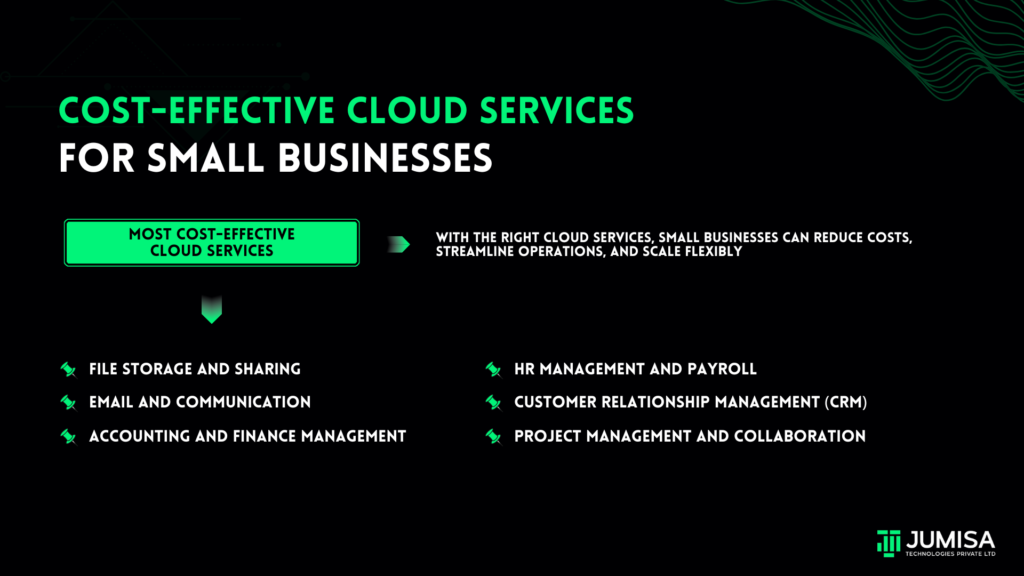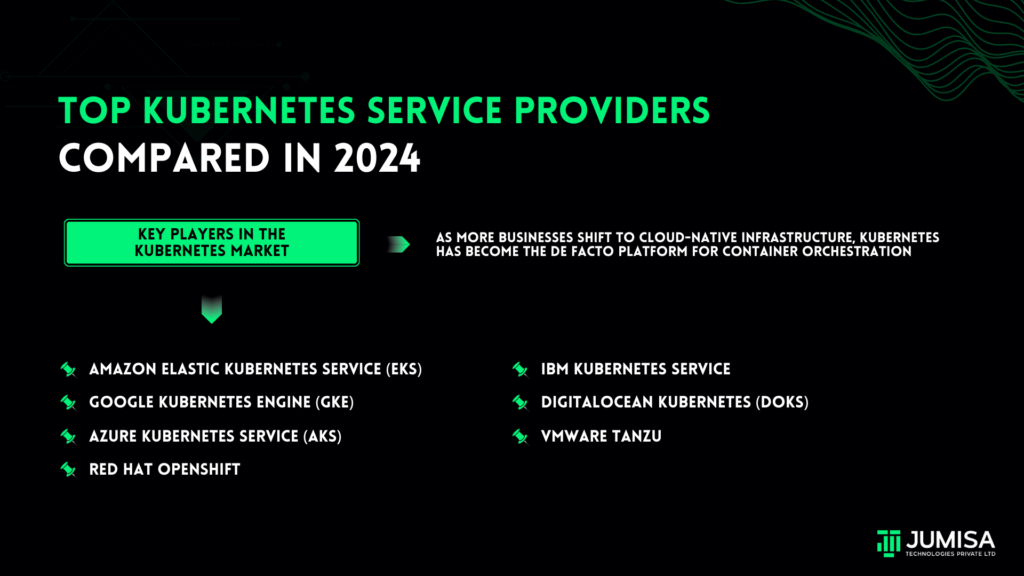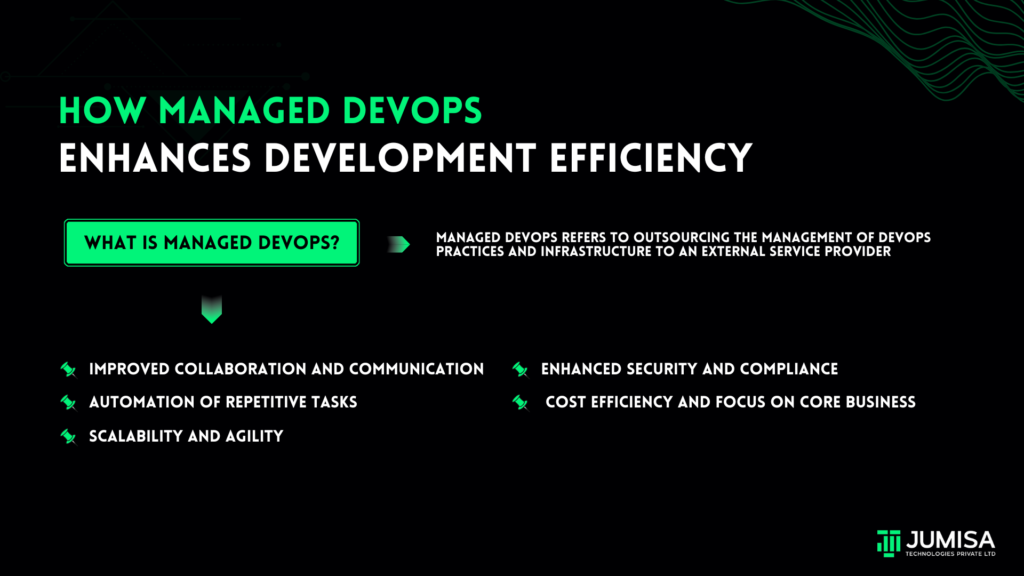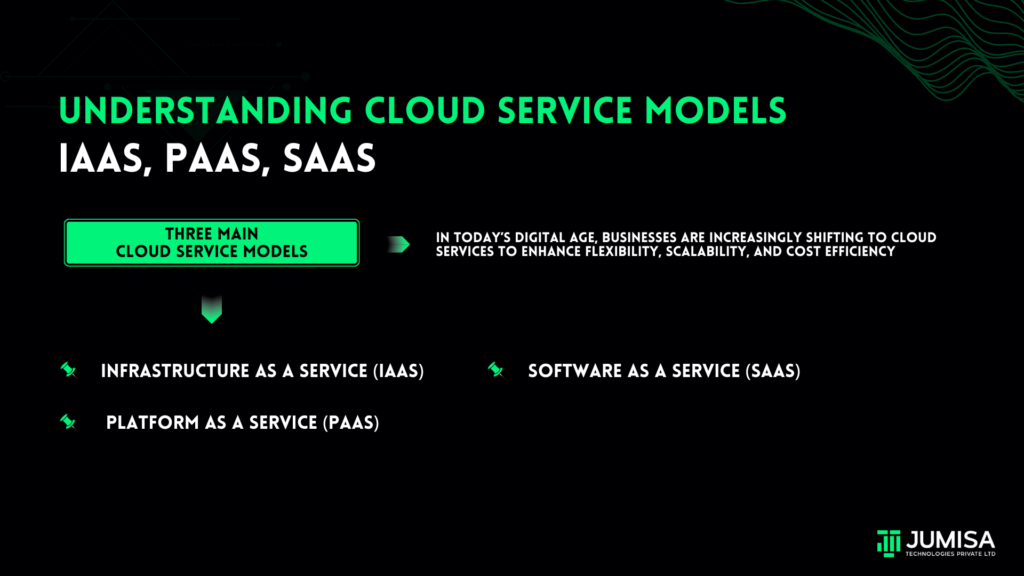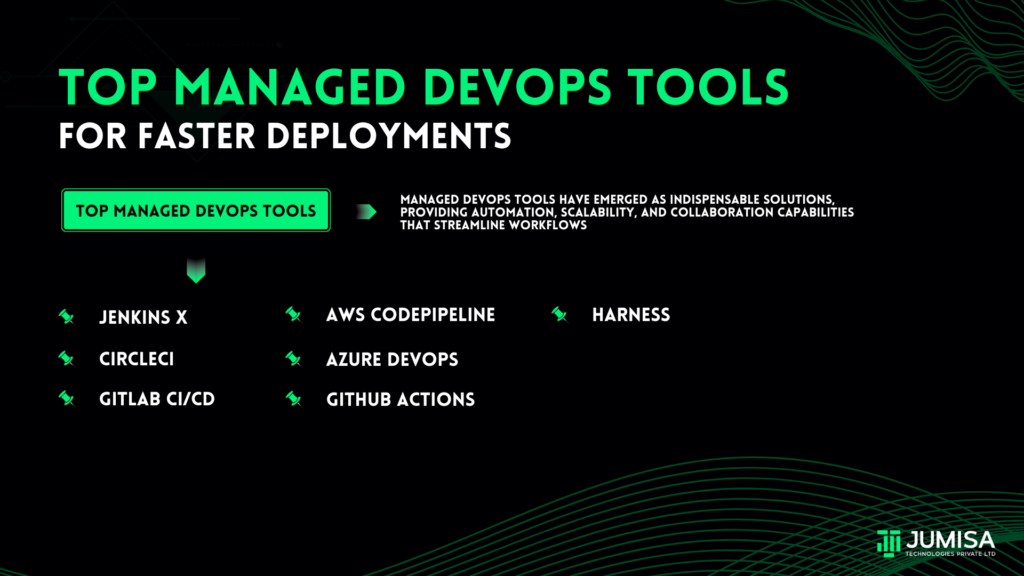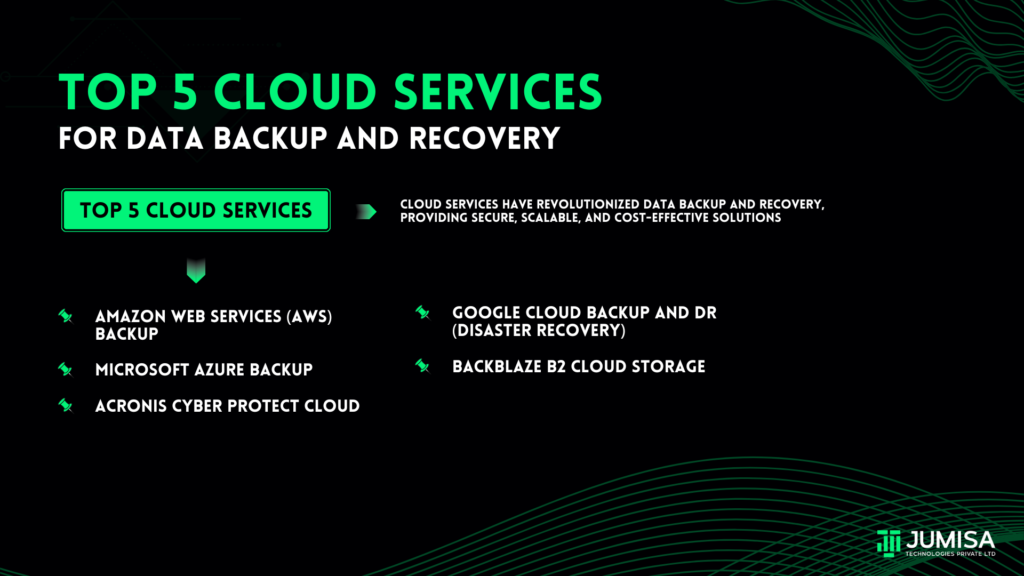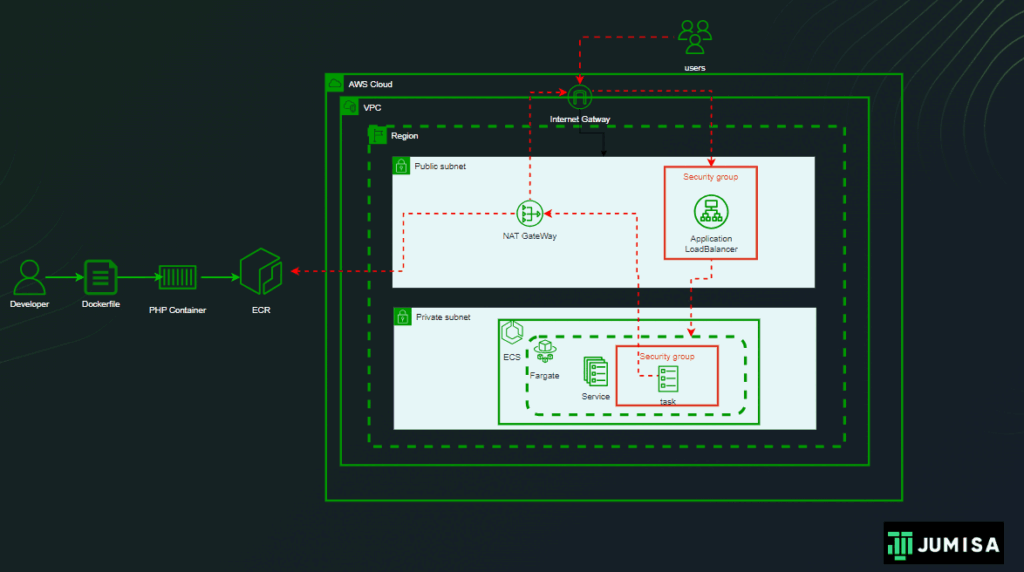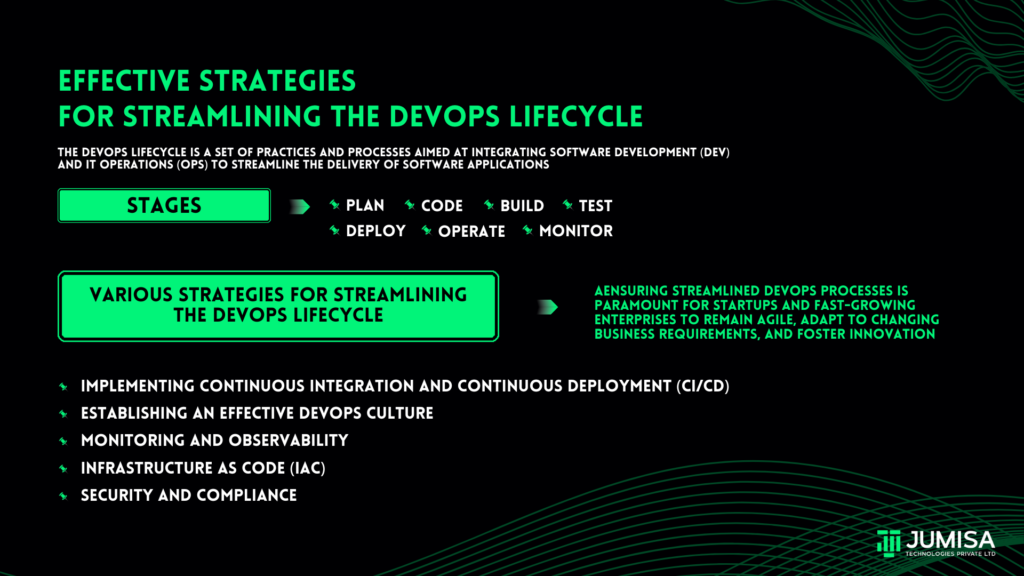
Use case:
- An organisation wants to streamline the DevOps lifecycle.
Solution
- Apply a suitable strategy for streamlining the DevOps lifecycle.
What is the DevOps lifecycle?
The DevOps lifecycle is a set of practices and processes aimed at integrating software development (Dev) and IT operations (Ops) to streamline the delivery of software applications.
It typically consists of several stages:
- Plan: In this stage, teams define the goals, requirements, and timelines for the software project. This involves collaboration between developers, operations teams, and other stakeholders.
- Code: Developers write and review code to implement new features or fix bugs.
- Build: Continuous integration (CI) tools automate the build process, allowing teams to detect and fix integration issues early in the development cycle.
- Test: Automated testing is performed to validate the functionality, performance, and security of the software.
- Deploy: The application is deployed to testing, staging, or production environments.
- Operate: Operations teams monitor the application’s performance, availability, and security in production environments.
- Monitor: Monitoring tools collect metrics, logs, and other data to provide insights into the application’s performance and health.
Various strategies for streamlining the DevOps lifecycle:
Establishing an effective DevOps culture
- It is pivotal for optimizing software development processes, and it hinges on fostering collaboration, communication, and shared responsibility across teams.
- By forming Agile cross-functional teams with representatives from Development, Operations, QA, and other relevant departments, organizations can promote collaboration and ensure that diverse perspectives are integrated into the development cycle.
- Encouraging open communication through daily standups, retrospectives, and other Agile ceremonies facilitates the sharing of updates, addressing challenges, and brainstorming solutions.
- Additionally, investing in ongoing learning opportunities, such as training sessions and workshops.
- This equips team members with the knowledge and skills needed to adapt to evolving DevOps practices and technologies, empowering them to contribute effectively to the DevOps culture.
Implementing Continuous Integration and Continuous Deployment (CI/CD)
- This streamlines the software development lifecycle by automating tasks like code integration, testing, and deployment.
- This automation reduces manual efforts and the risk of human error, while also accelerating feedback loops, allowing teams to identify and address issues promptly.
- With CI/CD, organizations can achieve rapid delivery of high-quality software, meeting the evolving demands of their users and markets.
- To effectively implement CI/CD, it’s essential to invest in suitable automation tools like Jenkins, GitLab, or CircleCI, and establish robust best practices for code integration, testing, and deployment to ensure consistency and predictability throughout the pipeline.
Infrastructure as Code (IaC)
- As your organization scales, the complexity of managing and provisioning infrastructure grows, consuming valuable time and resources.
- Infrastructure as Code (IaC) offers a solution by enabling automated management and provisioning of infrastructure, ensuring version control, repeatability, and consistency across environments.
- With IaC, you can streamline infrastructure management by automating provisioning, configuration, and deployment tasks, reducing the risk of configuration drift and human error.
- Additionally, IaC facilitates the onboarding of new team members by providing them with clear infrastructure setup instructions in code form.
- Tools like Terraform provide effective implementation of IaC, maximizing its benefits for your organization.
Monitoring and Observability
- Implementing comprehensive monitoring and observability solutions is essential for effectively tracking system performance, pinpointing issues, and understanding application behavior.
- With robust monitoring and observability in place, you can make informed decisions based on data to optimize your DevOps workflows and enhance system performance.
- By detecting and addressing issues proactively, you minimize downtime and ensure a smoother user experience.
- Furthermore, having a holistic view of your infrastructure and applications enables better capacity planning and resource allocation.
- When selecting monitoring and observability tools, prioritize those that offer real-time insights and align with your organization’s technology stack.
Security and Compliance
- Embedding security practices and tools throughout the DevOps lifecycle is essential for addressing security and compliance concerns proactively and continuously.
- Emphasizing security and compliance involves adopting a “shift-left” approach, integrating security practices early in the development process to prevent reactive measures later on.
- Automating security scanning and vulnerability detection enhances efficiency and ensures thorough coverage. Implementing role-based access control and audit logging maintains visibility and accountability for infrastructure and application changes.
- By prioritizing security and compliance, DevOps processes become more streamlined, reducing the risk of vulnerabilities and compliance issues emerging in later development stages.
- This proactive approach minimizes the likelihood of security breaches and ensures alignment with regulatory requirements.
Conclusion
Ensuring streamlined DevOps processes is paramount for startups and fast-growing enterprises to remain agile, adapt to changing business requirements, and foster innovation. Through diligent attention to these five critical domains with DuploCloud, you can refine DevOps workflows to unlock your organization’s maximum capabilities. By tackling these challenges head-on and strategically embracing suitable tools, technologies, and methodologies, you pave the way for sustained success and expansion in the long run.

